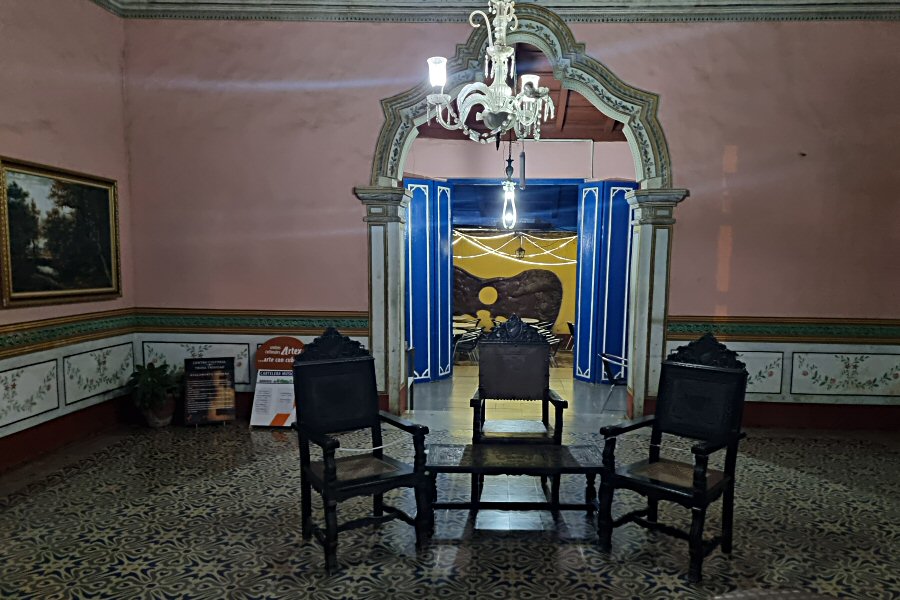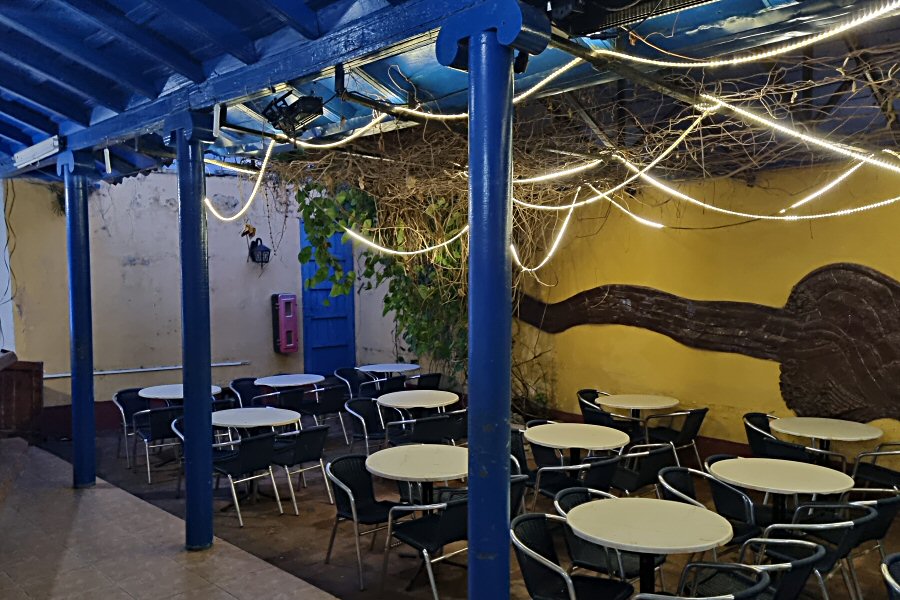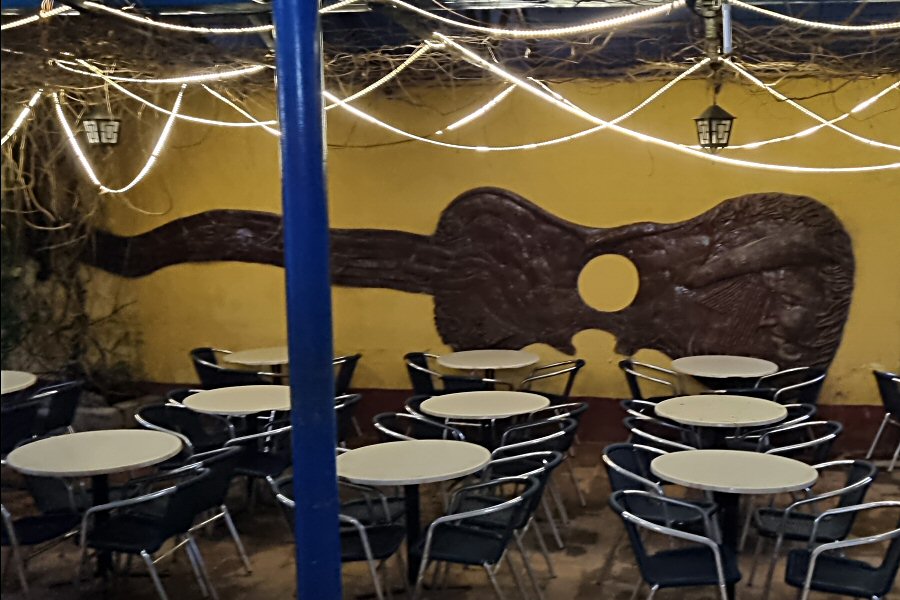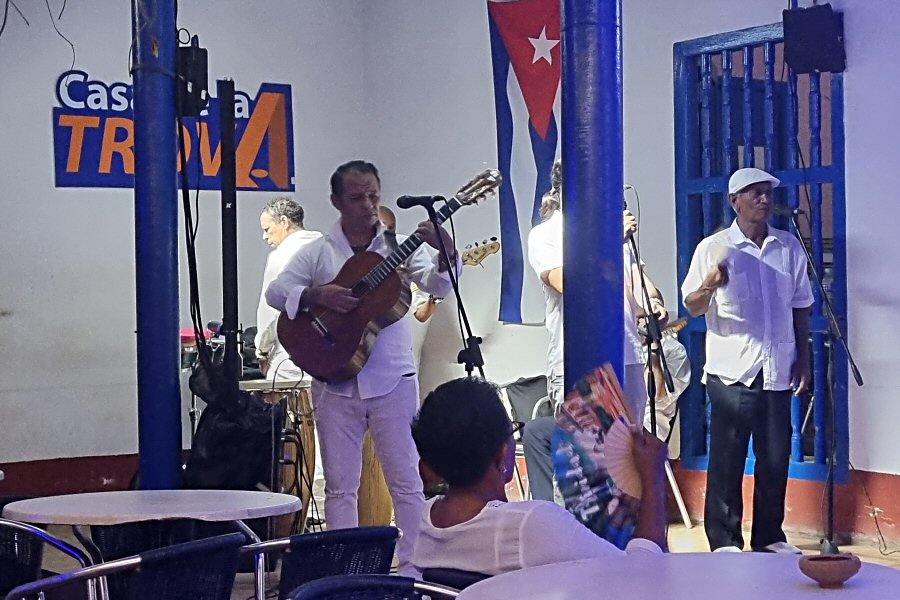Casa de la Trova
The word ‘trova’ refers to a style of music that dates back to the 14th century. Trova originated from songs spread by troubadours and trouvères in France in the Middle Ages. At that time, the bourgeoisie no longer composed music, but added different texts to the same melodies.
The Cuban trova that dates back to the 19th century, is one of the most interesting aspects of Cuban musical culture. The new Cuban trova emerged in the mid-twentieth century, and Silvio Rodríguez and Pablo Milanés are the most well-known representatives of it. The music is mainly based on guitar and voice, and its lyrics have a social content.
Later, the Cuban trova come to a new stage characterized by the boleros, guarachas, habaneras etc., called traditional trova. The prominent names of this period are José (Pepe) Sánchez, Sindo Gara, Alberto Villalón, Rosendo Ruiz Suárez, Patricio Ballagas, and Manuel Corona. Generally speaking, while the music played by the old trovadores was guitar-based, you will hear a wide range of music types from bolero to opera at Casa de la Trova. The music you will listen in this venue is traditional Cuban trova.
The early Trova originated in Cuba’s easternmost province, Oriente. Unsurprisingly, the most famous Casa de la Trova in Cuba is located in Santiago de Cuba, considered by many to be the nation’s musical epicenter. Casa de la Trova in Trinidad is as perfect as in Santiago.
Records of the building where Casa de la Trova is located, date back to 1777. It consists of a portal, dining room, corridor, bedrooms and an interior patio. It was restored 200 years after its construction and opened its doors to the public in 1974, as a meeting venue gathering and enjoyment center for troubadours and for those who want to listen to quality live music.
It is an ideal place to watch Cubans dancing, especially salsa, accompanied by famous Cuban cocktails. It is a small venue, but the groups performing are very good. It is a tradition for locals to invite tourists who come to the venue to dance. There are even caballeros who invite those who are hesitant about not being able to salsa to dance. Everyone dances with each other in a friendly manner. The warm dialogue between the people who fill the hall, who know each other, and the orchestra members makes the atmosphere even more intimate. The entrance fee is very low for such a place. The only unpleasant thing maybe is that each group tries to sell you their own CDs and forces you to tip if you do not buy them. However, since the venues do not pay the musicians, this should be considered normal.
The Cuban trova that dates back to the 19th century, is one of the most interesting aspects of Cuban musical culture. The new Cuban trova emerged in the mid-twentieth century, and Silvio Rodríguez and Pablo Milanés are the most well-known representatives of it. The music is mainly based on guitar and voice, and its lyrics have a social content.
Later, the Cuban trova come to a new stage characterized by the boleros, guarachas, habaneras etc., called traditional trova. The prominent names of this period are José (Pepe) Sánchez, Sindo Gara, Alberto Villalón, Rosendo Ruiz Suárez, Patricio Ballagas, and Manuel Corona. Generally speaking, while the music played by the old trovadores was guitar-based, you will hear a wide range of music types from bolero to opera at Casa de la Trova. The music you will listen in this venue is traditional Cuban trova.
The early Trova originated in Cuba’s easternmost province, Oriente. Unsurprisingly, the most famous Casa de la Trova in Cuba is located in Santiago de Cuba, considered by many to be the nation’s musical epicenter. Casa de la Trova in Trinidad is as perfect as in Santiago.
Records of the building where Casa de la Trova is located, date back to 1777. It consists of a portal, dining room, corridor, bedrooms and an interior patio. It was restored 200 years after its construction and opened its doors to the public in 1974, as a meeting venue gathering and enjoyment center for troubadours and for those who want to listen to quality live music.
It is an ideal place to watch Cubans dancing, especially salsa, accompanied by famous Cuban cocktails. It is a small venue, but the groups performing are very good. It is a tradition for locals to invite tourists who come to the venue to dance. There are even caballeros who invite those who are hesitant about not being able to salsa to dance. Everyone dances with each other in a friendly manner. The warm dialogue between the people who fill the hall, who know each other, and the orchestra members makes the atmosphere even more intimate. The entrance fee is very low for such a place. The only unpleasant thing maybe is that each group tries to sell you their own CDs and forces you to tip if you do not buy them. However, since the venues do not pay the musicians, this should be considered normal.
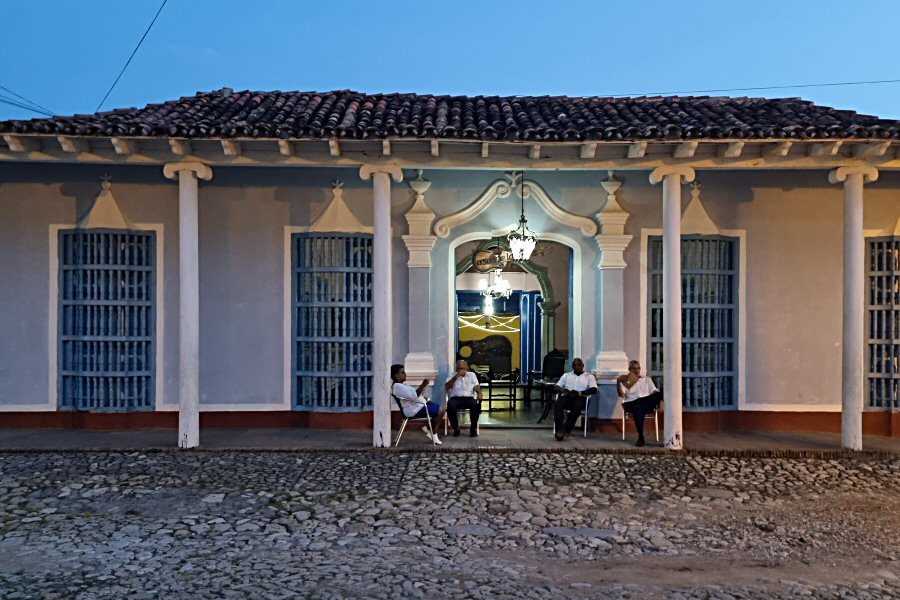
The Casa de la Trova is located on the Cristo Street #29, between the Alameda Street and the Callejon de la Cañada, Trinidad
(+53) 4 199 6445

☰ map
